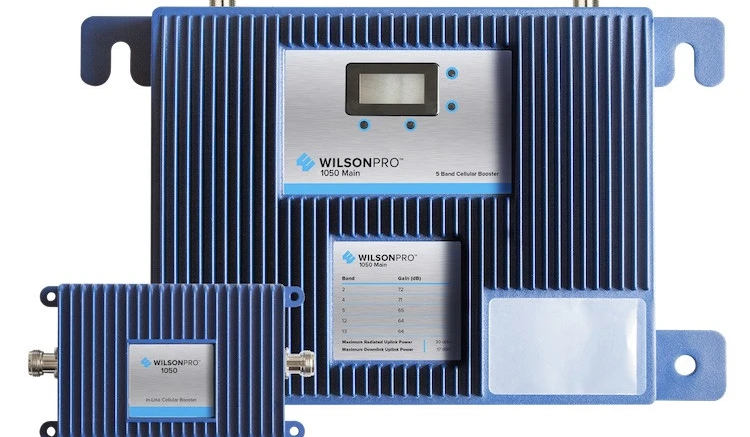The world of cellular signal boosters changed in 2014. Before then, it really was the wild west. We could have sold you virtually anything you wanted . For example, we could have sold a Wilson 811201 amplifier to let you address really long cable runs.
That all changed with new FCC rules developed along with cell booster makers and carriers. Those rules were a good thing, but they did make some stuff a little harder. In the new rules, all equipment for consumer use must come with all the cables, antennas, and accessories required to make things work. On the other hand, these rules more or less banned inline amplifiers for cell boosters.
Why would you want an inline cellular amplifier?
An inline cellular amplifier would let you put antennas really really far away from the main unit. This was a common practice in the 2010s before we started seeing super-powered units like the WilsonPro Enterprise 4300. The problem with an inline amplifier is it could potentially overload the main amplifier or the whole cellular network if not managed the right way.
Exception to the rule: WilsonPro 1050
The WilsonPro 1050 is a very special booster indeed. It’s the only cell booster system sold today with an external amplifier. The amplifier communicates with the base unit to make sure there is no chance of an overload. The amplifier itself looks perfectly normal, but it hides a secret. It is designed to only work with the 1050 base unit and won’t work with any other booster.
The 1050 is sort of a special case because it allows one antenna to be amplified while others aren’t. There are some specific times when this is the best option, but it’s not always the best workaround.
What’s the best workaround?
Let’s say you plan to cover a very large area with cell boosters, for example over 25,000 square feet. You may decide to use multiple small booster kits, or a massive system like that WilsonPro Enterprise 4300. It depends on the space you need to cover and how many different locations you have for amplifiers. In general, one booster is easier to manage than multiple ones. The decision is really up to you and it depends on the specifics of your situation.
Can you use some other amplifier?
It’s worth pointing out that just because an amplifier is rated for cell phone frequencies does not mean it will work. For example, Sonora makes excellent line amplifiers but they aren’t bidirectional, meaning that if they were used for cellular use they would amplify the signal from the booster but not to the booster. You’d get great reception but no one would be able to hear you when you speak.
If you’re looking for the best cellular signal booster solution for large spaces, call our Business Enterprise Systems division at 888-233-7563. This team specializes in creating large-scale solutions for unique customer needs. Start the process with a call, or fill out the form below if it’s after East Coast business hours. A technician will get back to you, usually within one business day.




